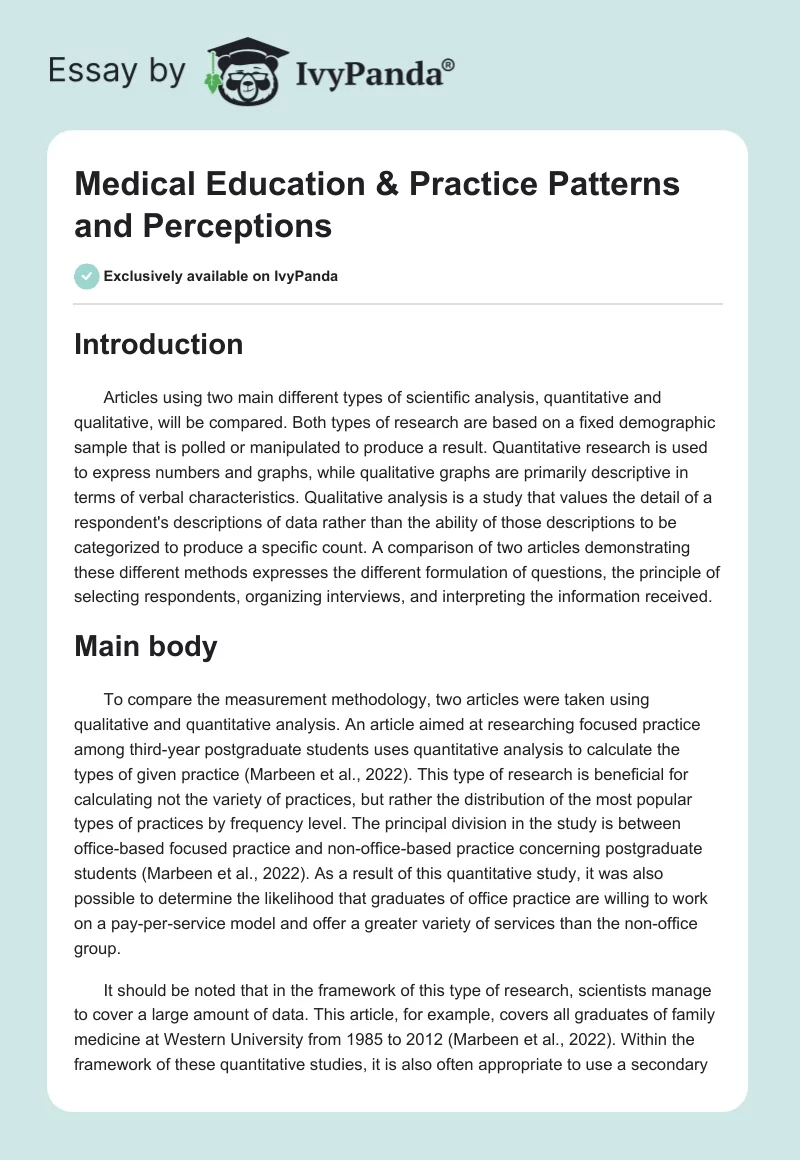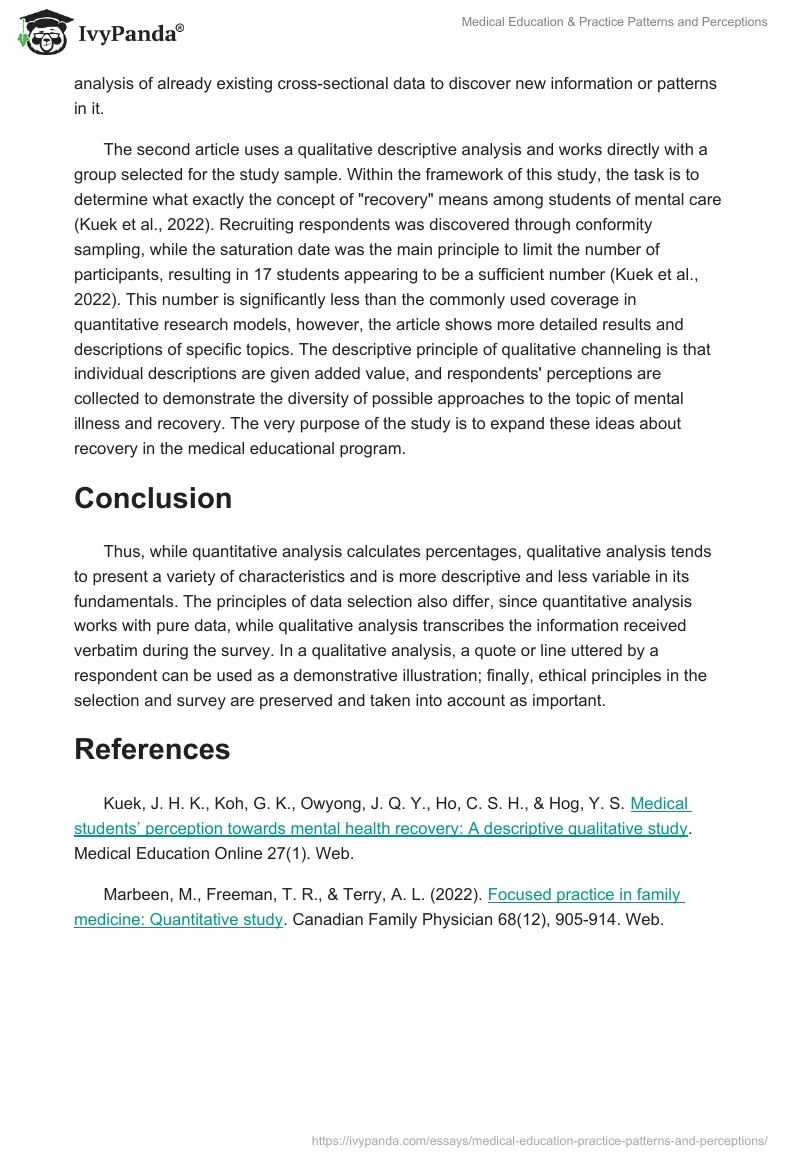Introduction
Articles using two main different types of scientific analysis, quantitative and qualitative, will be compared. Both types of research are based on a fixed demographic sample that is polled or manipulated to produce a result. Quantitative research is used to express numbers and graphs, while qualitative graphs are primarily descriptive in terms of verbal characteristics. Qualitative analysis is a study that values the detail of a respondent’s descriptions of data rather than the ability of those descriptions to be categorized to produce a specific count. A comparison of two articles demonstrating these different methods expresses the different formulation of questions, the principle of selecting respondents, organizing interviews, and interpreting the information received.
Main body
To compare the measurement methodology, two articles were taken using qualitative and quantitative analysis. An article aimed at researching focused practice among third-year postgraduate students uses quantitative analysis to calculate the types of given practice (Marbeen et al., 2022). This type of research is beneficial for calculating not the variety of practices, but rather the distribution of the most popular types of practices by frequency level. The principal division in the study is between office-based focused practice and non-office-based practice concerning postgraduate students (Marbeen et al., 2022). As a result of this quantitative study, it was also possible to determine the likelihood that graduates of office practice are willing to work on a pay-per-service model and offer a greater variety of services than the non-office group.
It should be noted that in the framework of this type of research, scientists manage to cover a large amount of data. This article, for example, covers all graduates of family medicine at Western University from 1985 to 2012 (Marbeen et al., 2022). Within the framework of these quantitative studies, it is also often appropriate to use a secondary analysis of already existing cross-sectional data to discover new information or patterns in it.
The second article uses a qualitative descriptive analysis and works directly with a group selected for the study sample. Within the framework of this study, the task is to determine what exactly the concept of “recovery” means among students of mental care (Kuek et al., 2022). Recruiting respondents was discovered through conformity sampling, while the saturation date was the main principle to limit the number of participants, resulting in 17 students appearing to be a sufficient number (Kuek et al., 2022). This number is significantly less than the commonly used coverage in quantitative research models, however, the article shows more detailed results and descriptions of specific topics. The descriptive principle of qualitative channeling is that individual descriptions are given added value, and respondents’ perceptions are collected to demonstrate the diversity of possible approaches to the topic of mental illness and recovery. The very purpose of the study is to expand these ideas about recovery in the medical educational program.
Conclusion
Thus, while quantitative analysis calculates percentages, qualitative analysis tends to present a variety of characteristics and is more descriptive and less variable in its fundamentals. The principles of data selection also differ, since quantitative analysis works with pure data, while qualitative analysis transcribes the information received verbatim during the survey. In a qualitative analysis, a quote or line uttered by a respondent can be used as a demonstrative illustration; finally, ethical principles in the selection and survey are preserved and taken into account as important.
References
Kuek, J. H. K., Koh, G. K., Owyong, J. Q. Y., Ho, C. S. H., & Hog, Y. S. Medical students’ perception towards mental health recovery: A descriptive qualitative study. Medical Education Online 27(1). Web.
Marbeen, M., Freeman, T. R., & Terry, A. L. (2022). Focused practice in family medicine: Quantitative study. Canadian Family Physician 68(12), 905-914. Web.


